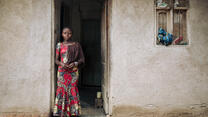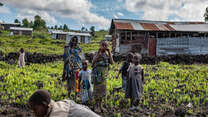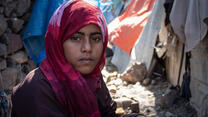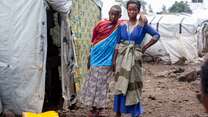The Democratic Republic of Congo (DR Congo) has been mired in conflict for over a decade, with devastating effects on its civilian population. The most recent war of 1998–2002 was characterized by mass displacement, collapse of health systems and food shortages, all contributing to major elevations of mortality. Although a formal peace accord was signed in December 2002, the war has since given way to several smaller conflicts in the five eastern provinces that have continued to exact an enormous toll on the lives and livelihoods of local populations.
Since 2000, the International Rescue Committee (IRC) has documented the humanitarian impact of war and conflict in DR Congo through a series of five mortality surveys. The first four studies, conducted between 2000 and 2004, estimated that 3.9 million people had died since 1998, arguably making DR Congo the world’s deadliest crisis since World War II. Less than 10 percent of all deaths were due to violence, with most attributed to easily preventable and treatable conditions such as malaria, diarrhea, pneumonia and malnutrition.
Recent political developments together with improvements in security and humanitarian funding have raised hope that DR Congo could emerge from years of crisis. A number of international agencies have expressed optimism that such progress would yield an early humanitarian dividend. But DR Congo faces many challenges on its road to recovery and development.
This fifth and latest survey, covering the period from January 2006 to April 2007, aims to evaluate the current humanitarian situation in DR Congo by providing an update on mortality. Investigators used a three-stage cluster sampling technique to survey 14,000 households in 35 health zones across all 11 provinces, resulting in wider geographic coverage than any of the previous IRC surveys.
The key findings and conclusions are:
- Elevated mortality rates persist across DR Congo. More than four years after the signing of a formal peace agreement, the DR Congo’s national crude mortality rate (CMR) of 2.2 deaths per 1,000 per month is 57 percent higher than the average rate for sub-Saharan Africa. This rate is unchanged since the previous IRC survey in 2004. These findings indicate that DR Congo remains in the midst of a major humanitarian crisis. As with previous surveys, mortality rates are significantly higher in the volatile eastern provinces than in the west of the country. In addition, mortality rates have risen significantly in the center of DR Congo (a region referred to as Transition East in the attached survey). Based on the results of the five IRC studies, we now estimate that 5.4 million excess deaths have occurred between August 1998 and April 2007. An estimated 2.1 million of those deaths have occurred since the formal end of war in 2002.
- Mortality in the DeMocratic republic of congo: An ongoing crisis 2. Modest, yet statistically significant improvements in mortality were documented in the eastern provinces. For the period covered by the survey, the only region to record a significant reduction in mortality since 2004 was that encompassing the five eastern provinces (referred to as East 2002 in the attached report). This improvement coincided with a reduction in the risk of violent death, as well as a more robust U.N. peacekeeping effort by MONUC, the international force in DR Congo. Nonetheless, the CMR in this region is still 2.6 deaths per 1,000 per month, a rate that is 85 percent higher than the sub-Saharan average. Ironically, it is these slight but notable improvements that are now being threatened by the current escalation of violence in North Kivu province.
- Most deaths are due to preventable and treatable conditions. While insecurity persists in the eastern provinces, only 0.4 percent of all deaths across DR Congo were attributed directly to violence. As with previous IRC studies in DR Congo, the majority of deaths have been due to infectious diseases, malnutrition and neonatal- and pregnancy-related conditions. Increased rates of disease are likely related to the social and economic disturbances caused by conflict, including disruption of health services, poor food security, deterioration of infrastructure and population displacement. Children, who are particularly susceptible to these easily preventable and treatable conditions, accounted for 47 percent of deaths, even though they constituted only 19 percent of the total population.
- Recovery from conflict is a slow and protracted process. The persistent elevation of mortality more than four years after the official end of the 1998–2002 war provides further evidence that recovery from conflict can take many years, especially when superimposed on decades of political and socioeconomic decline. These data are consistent with those from other conflict-impacted states. Sustained and measurable improvements in key indicators such as mortality will require committed national and international engagement for many years.
The IRC survey overlaps only partially with the period since December 2006, during which there has been an escalation of violence in North Kivu province, resulting in the displacement of more than 400,000 persons. Recent political and humanitarian gains are in jeopardy and further escalation of the conflict could potentially destabilize the region beyond DR Congo’s own borders. Steadfast international commitment to secure recent gains, prevent further deterioration and scale up assistance to other regions of the country is as necessary now in DR Congo as at any other recent period.



